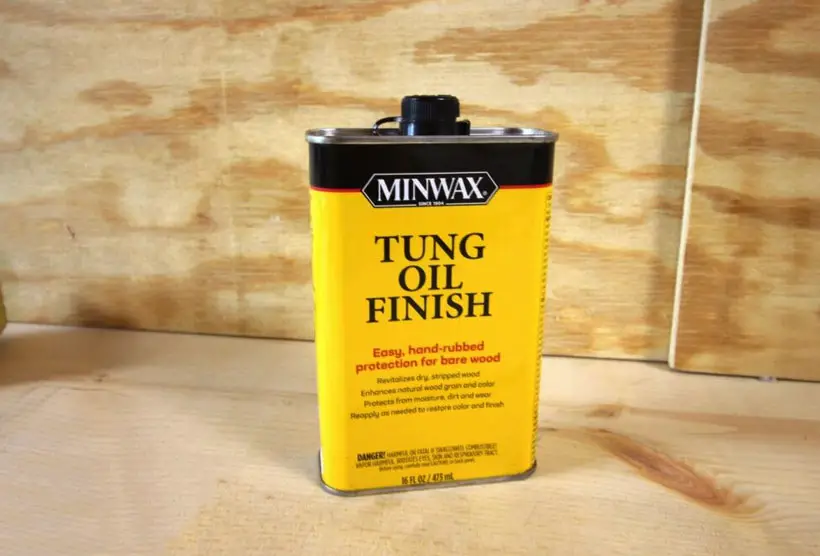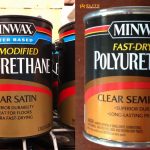Can You Put Polyurethane Over Tung Oil? Here’s Everything You Need To Know
When it comes to finishing and protecting wood surfaces, many options are available. Two popular choices are tung oil finish and polyurethane finish. Each of these finishes has its unique qualities and benefits.
So, can you put polyurethane over tung oil? Of course, polyurethane can be applied atop tung oil. By allowing tung oil to fully cure before applying another finish, you can create a protective barrier that enhances the wood’s natural beauty.
Are you curious to know more about the differences between these finishes and the step-by-step process of applying both finishes? Keep reading to understand better these finishes and how they can transform your woodworking projects.
Is Another Finish Even Necessary For Tung Oil?
Tung oil, when applied correctly and cured fully, can provide a decent level of protection. However, it’s important to note that tung oil alone may not offer the same durability and resistance to wear and moisture as some other finishes.

If you anticipate heavy use or exposure to water or harsh environments, adding a finish can provide an extra layer of protection.
- Applying a finish atop tung oil can help seal the wood surface and provide additional benefits such as increased scratch resistance and enhanced moisture protection.
- Polyurethane is a popular choice for a finish over tung. It forms a hard, protective layer atop tung oil, safeguarding the wood from daily wear and tear.
When deciding whether to apply a finish atop tung oil, consider the specific needs of your project. Tung oil alone may be sufficient if you’re working on a decorative piece or an indoor item that won’t be subjected to heavy use or moisture exposure.
Conversely, applying a finish like polyurethane can offer added durability and longevity for surfaces that require extra protection or are exposed to high traffic or moisture.
Can You Put Polyurethane Over Tung Oil?
Yes. Polyurethane can be applied atop tung oil. However, it is crucial to remember that these two finishes do not combine. Instead, you’re applying polyurethane atop tung oil. Both finishes have distinct chemical compositions and qualities that prevent them from completely combining.
If you attempt to combine both finishes, you will most likely wind up with a sticky mess that will not produce the desired results. When applying these finishes, it is critical to use a layering technique.

Tung oil penetrates the surface of the wood and accentuates its natural beauty, while polyurethane acts as a protective barrier. This layering approach combines the beauty of tung oil with the durability of polyurethane, resulting in a beautiful wood surface with long-lasting protection.
Therefore, letting the tung set completely is key before adding the polyurethane. This ensures that the polyurethane adheres adequately to the wood surface and offers the appropriate protection.
What Is the Difference Between These Two Finishes?
Both finishes are common wood finishes, although they differ in several ways. Here are some important distinctions:
- Composition: Tung oil comes from the nut of the tung tree, therefore, making it a natural finish, whereas polyurethane is manufactured. It is typically made from chemicals and polymers.
- Hardness and Moisture Resistance: Polyurethane is harder and repels moisture better than tung oil. It forms a protective layer on the surface of the wood, making it more waterproof and scratch-resistant. Conversely, tung oil provides a glossy finish but doesn’t offer the same level of hardness or moisture resistance as polyurethane.
- Indoor vs. Outdoor Use: Tung oil often is preferred for indoor applications due to its decorative qualities and glossy appearance. It enhances the natural beauty of wood and provides a warm, amber hue. Polyurethane, on the other hand, is more typically utilized for outdoor projects or surfaces that need greater protection.
- Penetration: Tung oil penetrates the wood better than polyurethane, which tends to sit on the surface of the wood. This deep penetration of tung oil enhances the wood’s natural grain and texture, giving it a rich and authentic look.
- Drying Time: Tung oil takes longer to dry compared to polyurethane. It requires multiple coats and sufficient curing time between applications. Polyurethane, conversely, dries relatively quickly and can be recoated within a shorter time frame.
Here is a video to help you understand these differences more.
How to Apply Polyurethane Atop Tung Oil?
If you’ve decided to apply polyurethane atop tung oil, here is a step-by-step guide to help you achieve the desired results:
Step 1: Prepare the Wood Surface
Start by ensuring the wood surface is clean and free from dust, dirt, or contaminants. Sand the surface gently to remove flaws and achieve a smooth base finish.
Step 2: Apply Tung Oil
Apply a thin and even tung oil coating to the wood surface with a clean cloth free of lint or brush. Follow the manufacturer’s recommendations for application and drying time. Allow the tung time to cure completely before moving on to the next step.
Step 3: Sand the Surface
After the tung has dried, softly sand the surface with sandpaper. This procedure aids in smoothing any high grain or defects generated by tung oil treatment.

Step 4: Apply Polyurethane
Apply an even polyurethane coating over the cured tung oil layer with a clean brush or applicator. Work with long, steady strokes, following the grain of the wood. Over Brushing will result in brush marks or bubbles.
Step 5: Allow Drying and Cure Time
According to the manufacturer’s instructions, allow the first polyurethane coat to dry. Typically, this can take several hours. Once dry, lightly sand the surface with sandpaper to remove any imperfections.
Step 6: Apply Additional Coats (Optional)
If desired, you can apply additional coats of polyurethane for added protection. Make sure to sand lightly between coats to ensure proper adhesion. Follow the manufacturer’s recommendations for the required coats and drying time between each coat.
Step 7: Final Sanding and Finishing
After applying all the desired coats of polyurethane, allow the final layer to cure thoroughly. Once cured, you can perform a final sanding with ultra-fine sandpaper to achieve a smooth and flawless finish.
Wipe away any sanding dust and apply furniture wax or polish if desired to further enhance the appearance and protect the surface.
If you’re exploring the compatibility of polyurethane with surfaces previously treated with tung oil, our guide on can you apply polyurethane with a roller might provide insights into application techniques that could be relevant to your project. Additionally, if you’re wondering about using polyurethane over epoxy-coated surfaces, our article on can you put polyurethane over epoxy considerations is here to offer guidance. We understand the importance of achieving the best finishes and addressing specific application scenarios, and our comprehensive resources are designed to help you navigate and make informed choices for your woodworking projects.FAQs
Here are a few more related questions you might be asking yourself now.
Q1: Can you apply tung oil over polyurethane?
No, it is not recommended to do this. Tung oil penetrates the wood surface, and applying it over a layer of polyurethane would hinder its ability to do so effectively.
Q2: What is the curing period of tung oil?
The curing time for tung oil can vary depending on temperature and humidity. Generally, tung oil takes about 24 to 48 hours to dry to the touch and several days to fully cure.
Q3: Can you apply a coat of varnish atop tung oil?
Yes. You can apply a coat of varnish atop tung oil, but it’s important to note that varnish is not considered a durable sealer when applied atop tung oil. While it is possible to combine these two finishes, the varnish may not adhere properly to the surface of tung oil, leading to potential issues with adhesion and long-term durability.
Conclusion
Regarding whether you can put polyurethane over tung oil, the answer is yes, you can. While these two finishes don’t mix, you can layer polyurethane atop tung oil to achieve both the aesthetic appeal of tung oil and the protective properties of polyurethane.
By layering these finishes, you can create a protective barrier that safeguards the wood while showcasing its unique grain and texture. So, whether you’re looking to protect your outdoor furniture from the elements or add a stunning finish to your indoor woodworking projects, applying polyurethane over tung oil can provide the best of both worlds.




